In a world where environmental concerns are increasingly influencing consumer choices, the design world is stepping up with ingenuity and irreverence. Furniture made from recycled and reclaimed materials isn’t just a green alternative anymore—it’s a canvas for experimentation, narrative, and surprising beauty. From DIY lamps made of gutter parts to chairs crafted from chain link fences, designers are discovering that limitations often breed the most radical forms of innovation.
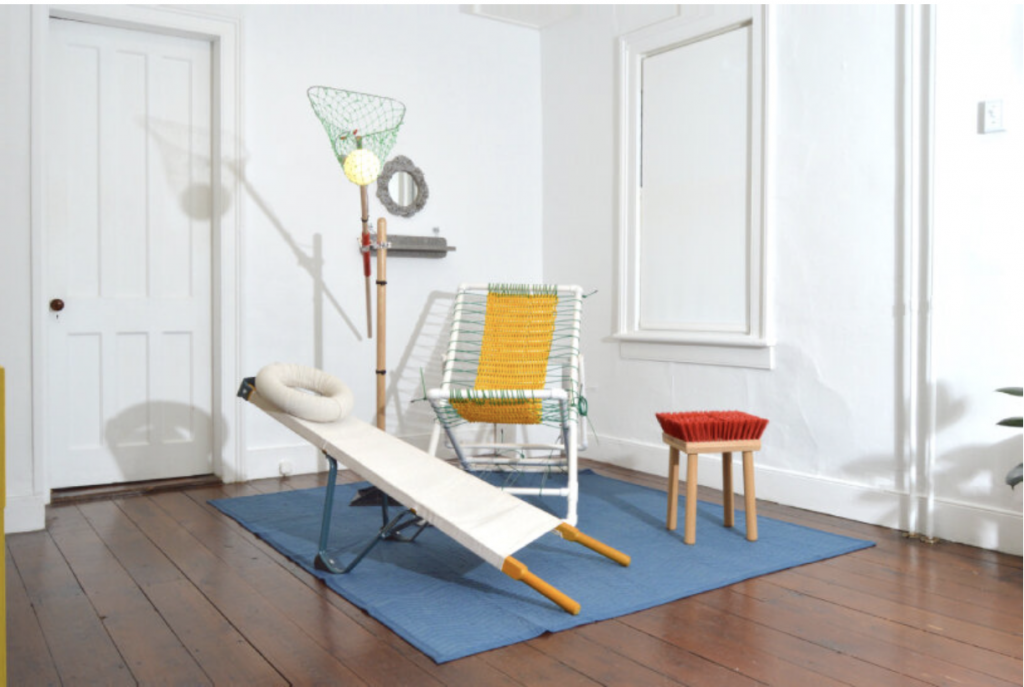
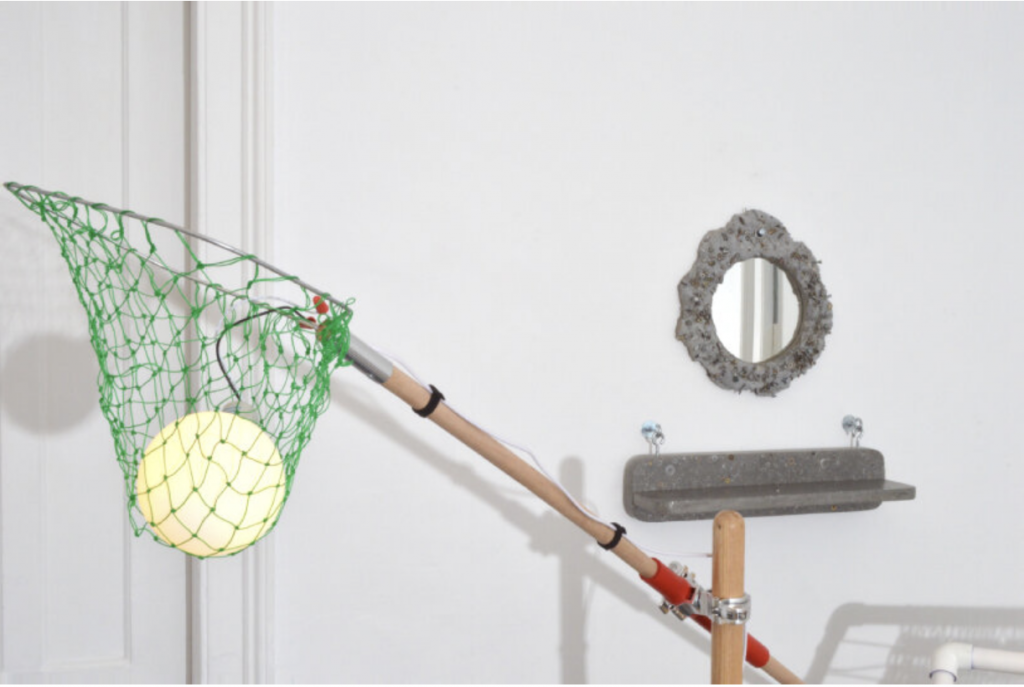
Catch & Release by Fort Standard
The NUTS + BOLTS exhibition in Tivoli, NY, is what happens when you give 24 designers access to a hardware store and ask them to reimagine domestic furniture. Organized by Chad Phillips of Available Items, the show restricts materials to those that can be sourced locally—think PVC pipes, clamps, tarps, and even street brooms. The exhibition challenges designers to build fully functional furniture or decor without using online industrial parts or 3D printing. The result is a refreshingly raw collection of tables, lamps, and chairs that blur the line between hardware and high-concept design.
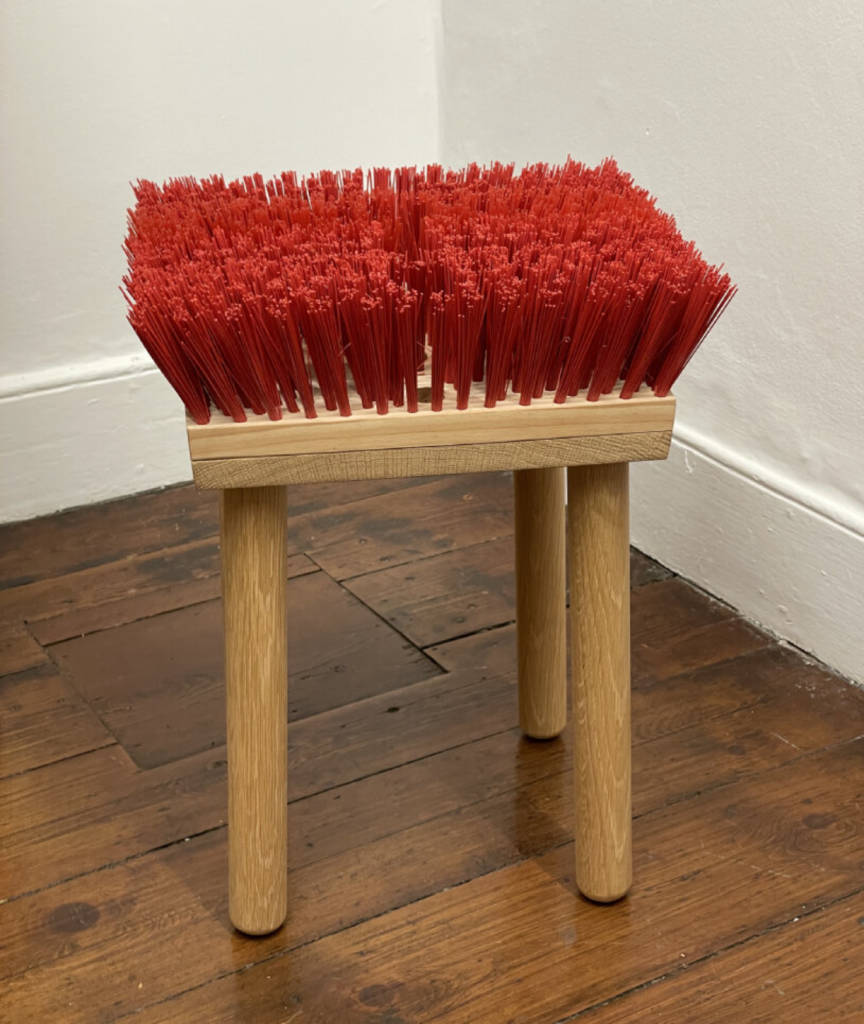
Street Broom Stool by Office of Tangible Space
Each piece on display serves as a testament to the potential of overlooked, utilitarian objects. From gutter components forming table legs to ceiling louvers transforming into light fixtures, the work showcases a tactile, almost improvisational spirit. The materials may be common, but the executions are anything but. Phillips sees the show as a way to reframe design thinking—not as a polished final product but as a process rooted in resourcefulness and storytelling.
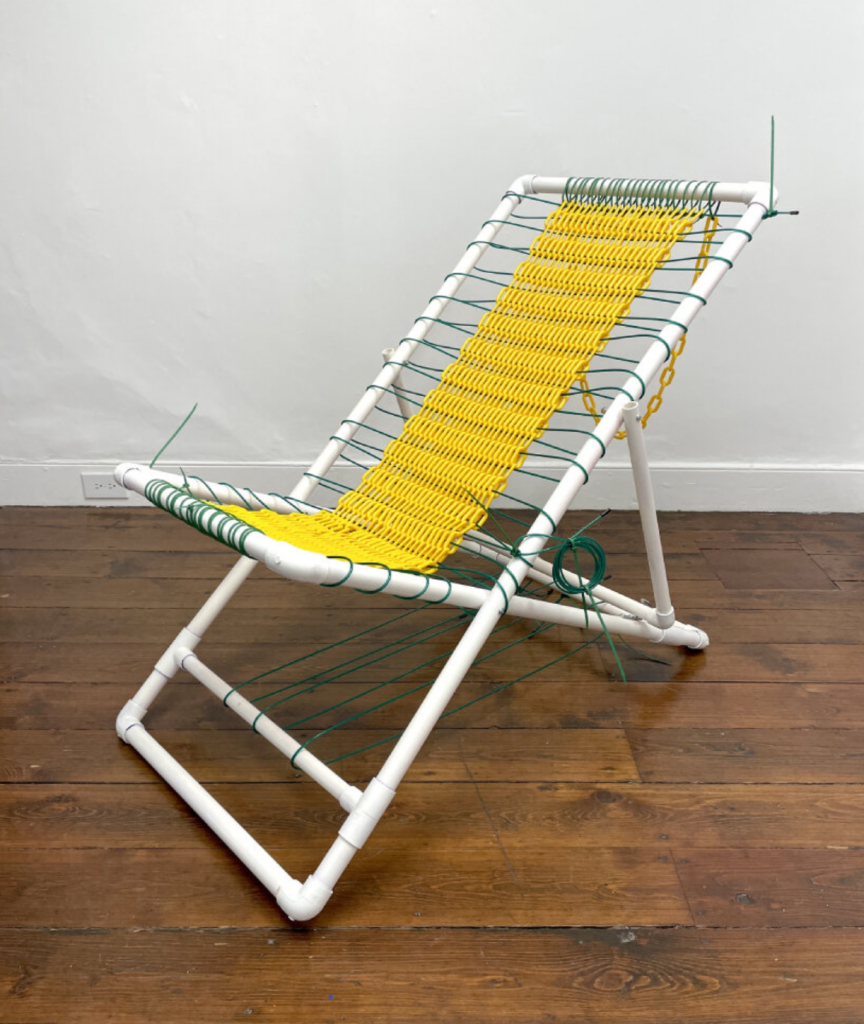
Tensioned Tarp Semi-Sling Seat (Beware of Dog) by we are happy people inc
A standout among the pieces is Catch & Release by Fort Standard, a floor lamp that fuses a soil tamper, tube clamps, and a fishing net into a singular glowing sculpture. Christian Borger’s modular lamp crafted from ceiling louvers offers a linear, architectural elegance, while Office of Tangible Space’s Street Broom Stool is both humorous and practical, using broom bristles for the seat and handles for structure. These works aren’t just clever—they’re conversation starters that redefine what materials can do when freed from their original purpose.
Further pushing the concept is Tensioned Tarp Semi-Sling Seat (Beware of Dog) by we are happy people inc, where chain link fence gates and a stretched tarp form an unexpectedly inviting chair. Meanwhile, Jed Heuer’s Trophy (for walking through a door), constructed from a bent aluminum doorway threshold and a beam clamp, adds sculptural whimsy to functional lighting.
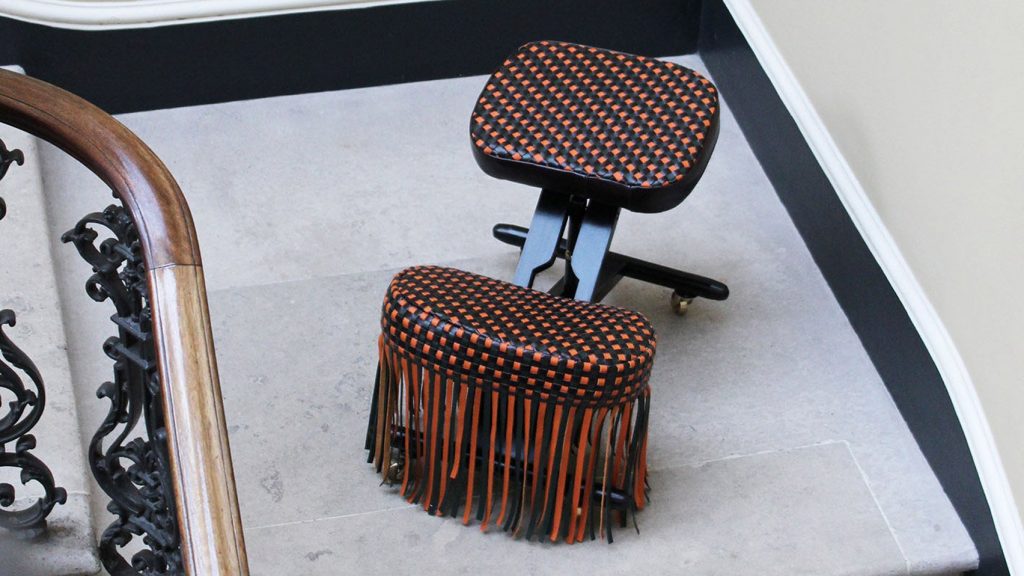
Exhibits from Unbroken
Across the Atlantic, the conversation around waste and design took a more emotional—and at times, whimsical—turn at this year’s London Design Festival, where the Unbroken exhibition tackled landfill-bound materials with a deeply personal lens. Curated by designer Francesco Feliziani and hosted by Camden Inspire, the show invited seven creatives to salvage discarded objects and transform them into functional pieces of furniture. The results ranged from poignant to playful, each piece revealing a layered story of reinvention.
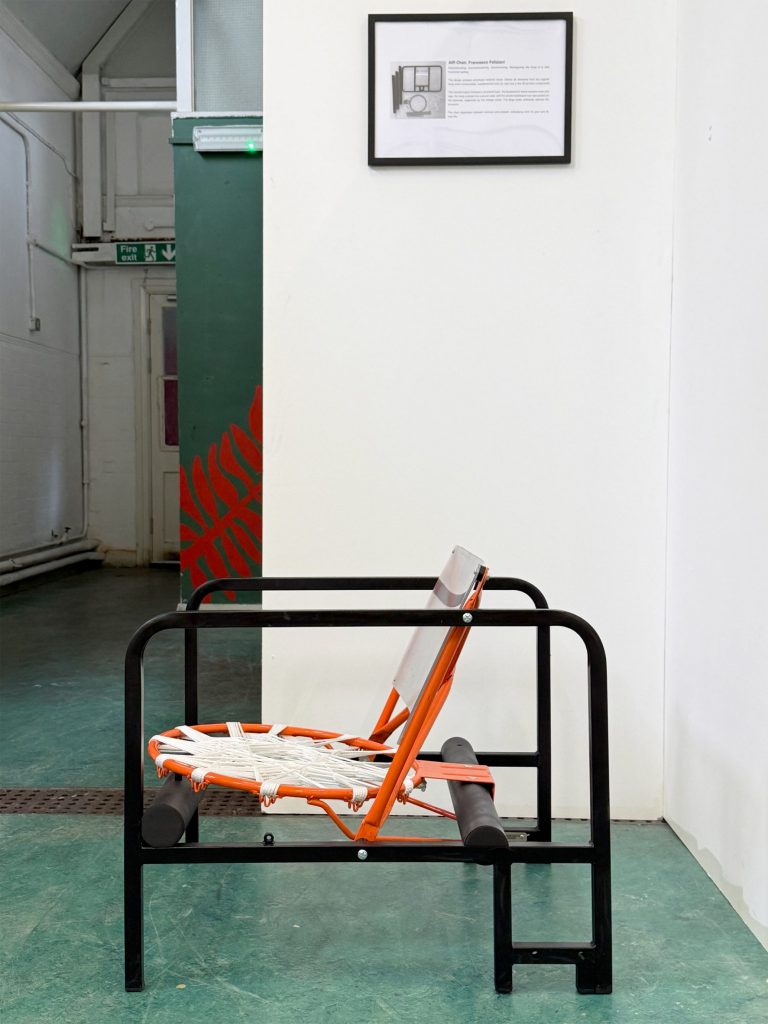
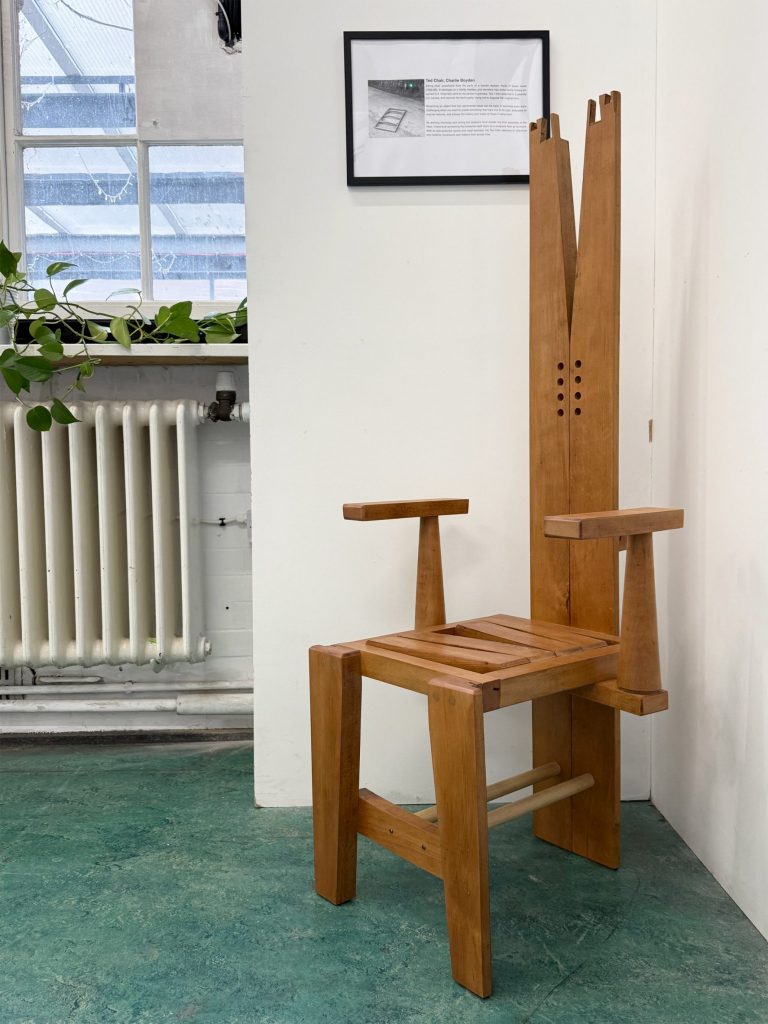
Exhibits from Unbroken
Feliziani’s own piece, the AIR Chair, is a poetic reimagining of a basketball stand. The hoop and net become the seat, the acrylic backboard forms the chair’s backrest, and the metal frame is carefully cut to serve as legs and arms. It’s a design that invites viewers to literally sit with the tension between past use and present reinvention. Feliziani explains his motivation succinctly: “Inside every discarded object, there are a multitude of possibilities, if we look at things from a different angle.”
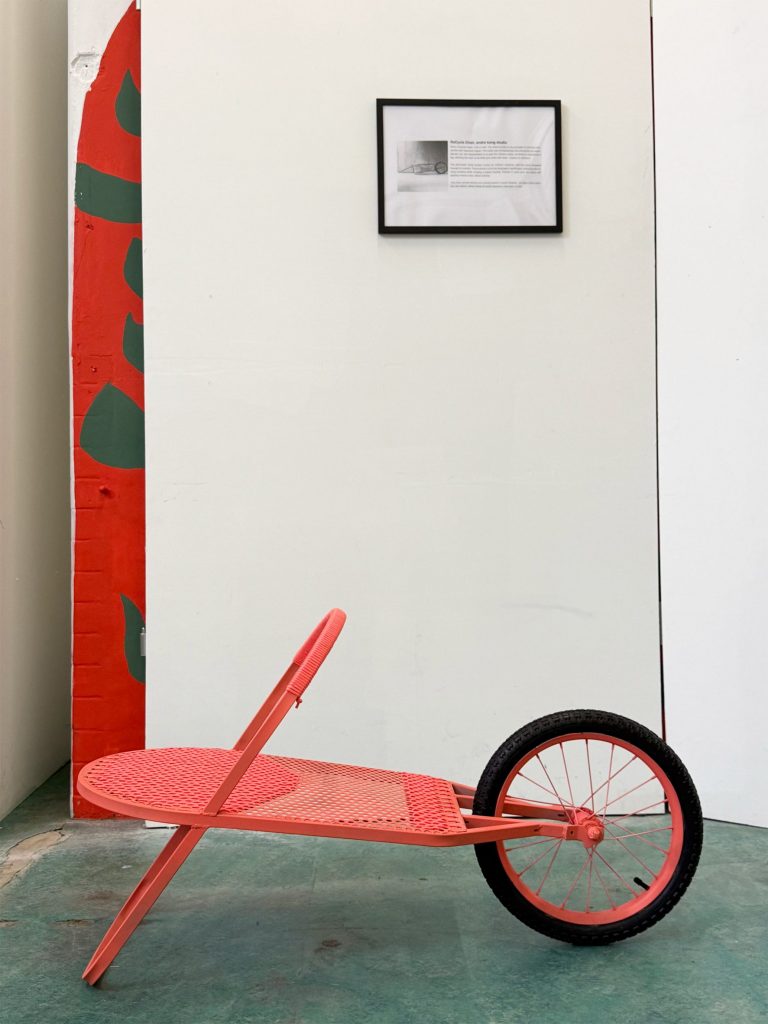
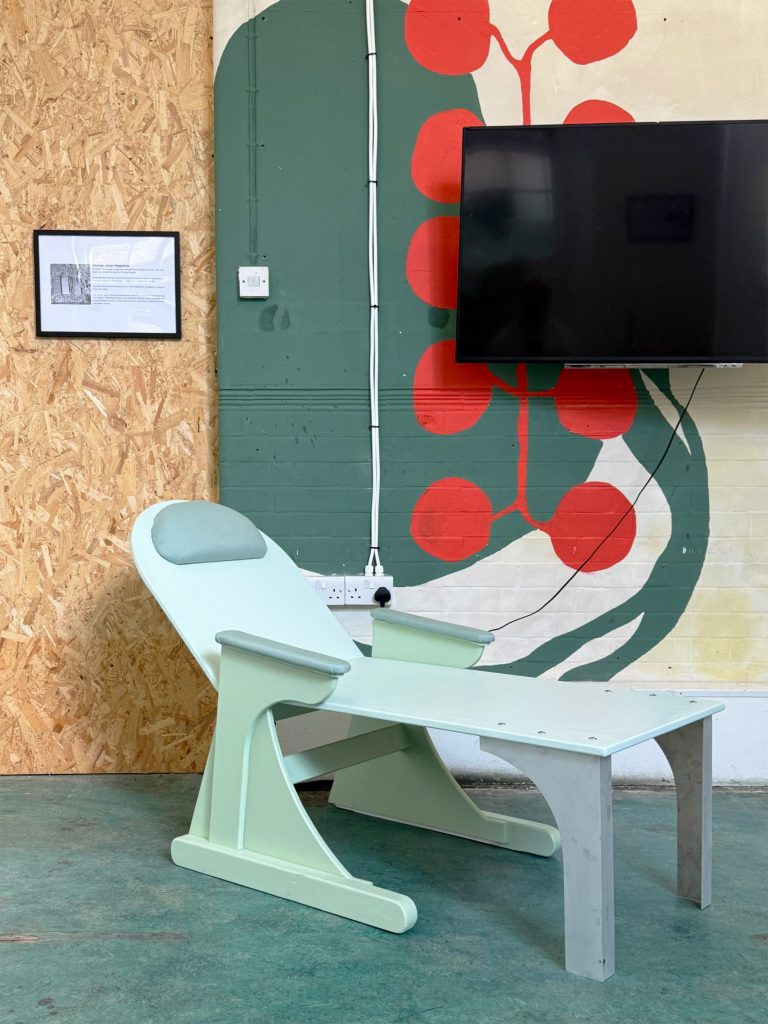
Exhibits from Unbroken
This ethos runs through all the works in Unbroken. 2LG Studio’s Resistance Chair repurposes resistance bands—materials intimately tied to co-founder Russell Whitehead’s injury recovery journey. Once tools of physical rehabilitation, the red bands now lace a once-worn chair in dramatic ruffles, turning pain and healing into an unexpectedly vibrant statement. Elsewhere, industrial designer Sebastian Bergne takes a more irreverent approach with the Trauma Table, made from a disassembled wooden rocking horse. The animal’s parts—legs, head, rockers—are rebuilt into a functional table, a tongue-in-cheek meditation on memory and transformation.
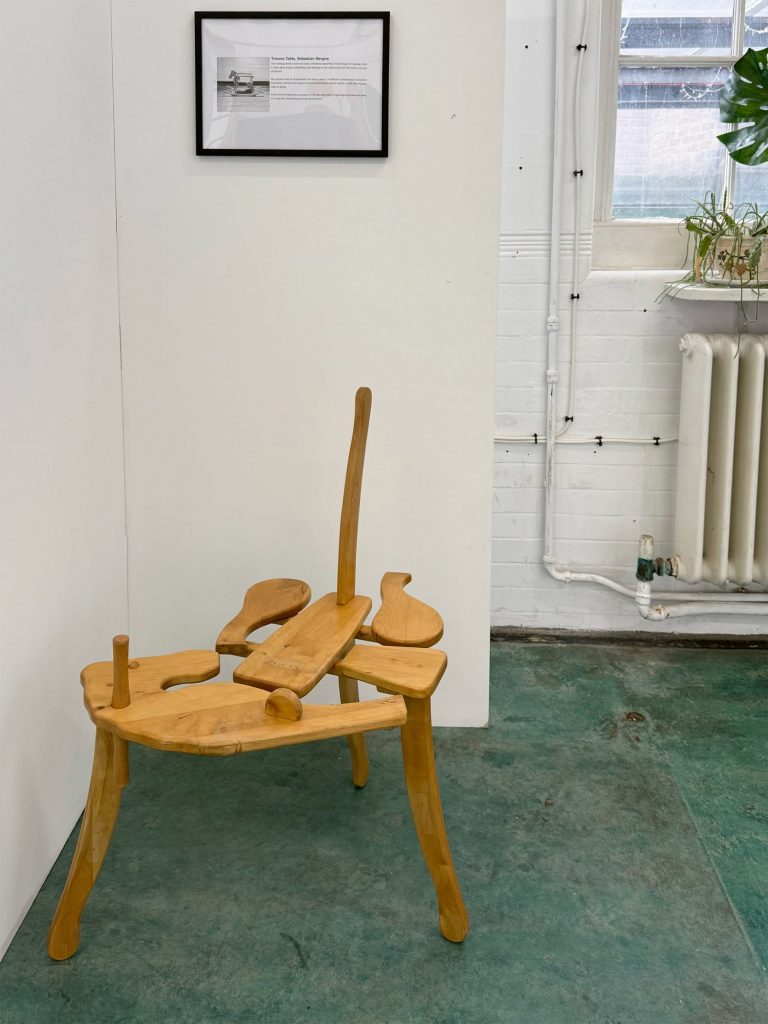
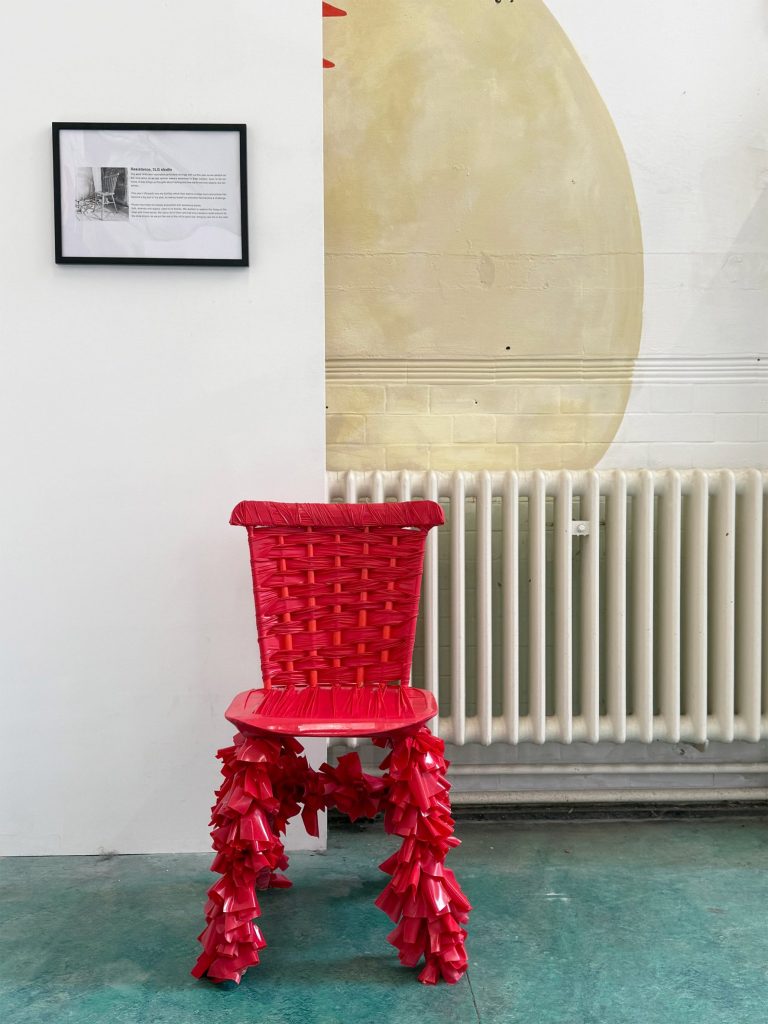
Exhibits from Unbroken
Further additions to the show carry that same thread of thoughtful reuse. Pearson Lloyd updated a pair of IKEA Tarno chairs using salvaged plywood from a previous exhibition, while designer Charlie Boyden transformed a beechwood daybed once owned by his partner’s grandfather into the sculptural Ted Chair—a tribute to lineage, labor, and form. Architect Andre Kong repurposed a bike trailer into the ReCycle Seat, complete with wheels, and Studio Tip injected a dose of provocation into a discarded film prop, crafting a BDSM-inspired lounge. Each piece not only diverts waste from landfill but also reframes the idea of what makes design meaningful in the first place.
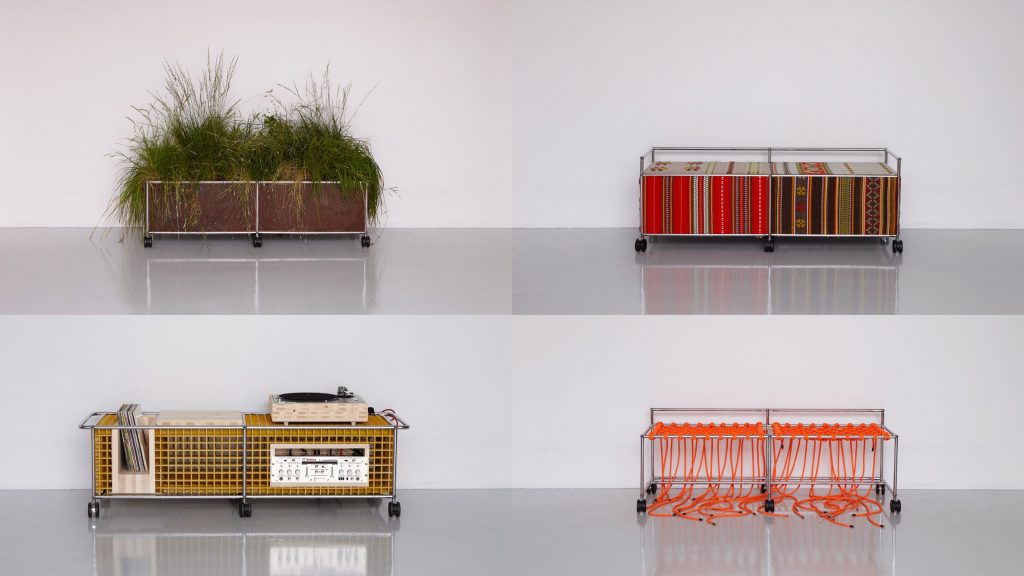
Exhibits from USM Haller Re-Framed
If the London and New York exhibitions spotlighted bold repurposing and narrative-driven design, Designers’ Saturday in Oslo offered a masterclass in modular reinvention. At the heart of the biennial event was USM Haller Re-Framed, an exhibition where Norwegian designers were invited to reimagine the iconic steel-framed furniture of Swiss manufacturer USM Haller using reclaimed materials. Spearheaded by Martin A Andersen, the project gave new life to a trove of vintage USM filing cabinets salvaged from a decommissioned Oslo bank office—once one of the brand’s largest 1980s orders.
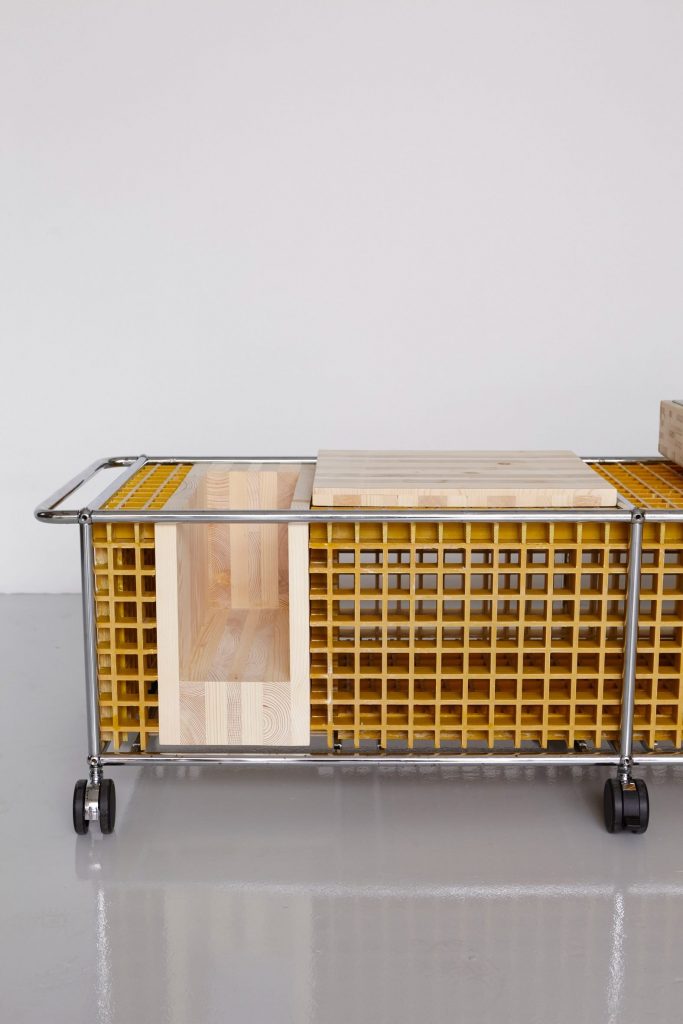
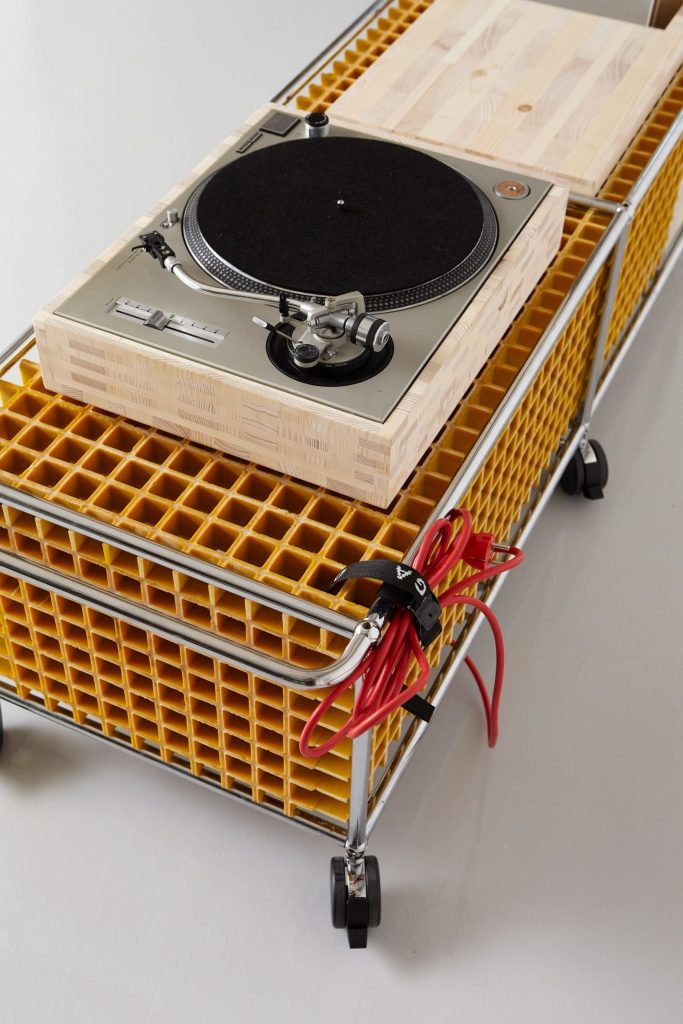
Exhibits from USM Haller Re-Framed
Rather than seeing the scuffed and aged furniture as a relic of corporate life, Andersen saw an opportunity. After converting the old cabinets into lowboards, he challenged nine designers to customize the units with personality and purpose. The only guideline: materials had to be self-sourced and reused. The results ranged from the poetic to the provocative. Kjetil Smedal repurposed grated fiberglass from a fishing boat yard and glued-laminated timber from a construction site to create a fully functioning record player console, complete with vinyl storage. In contrast, Lloyd Winter filled his unit with woodchips and wild grasses, encasing it in rusted steel mesh to mimic nature reclaiming forgotten human objects.
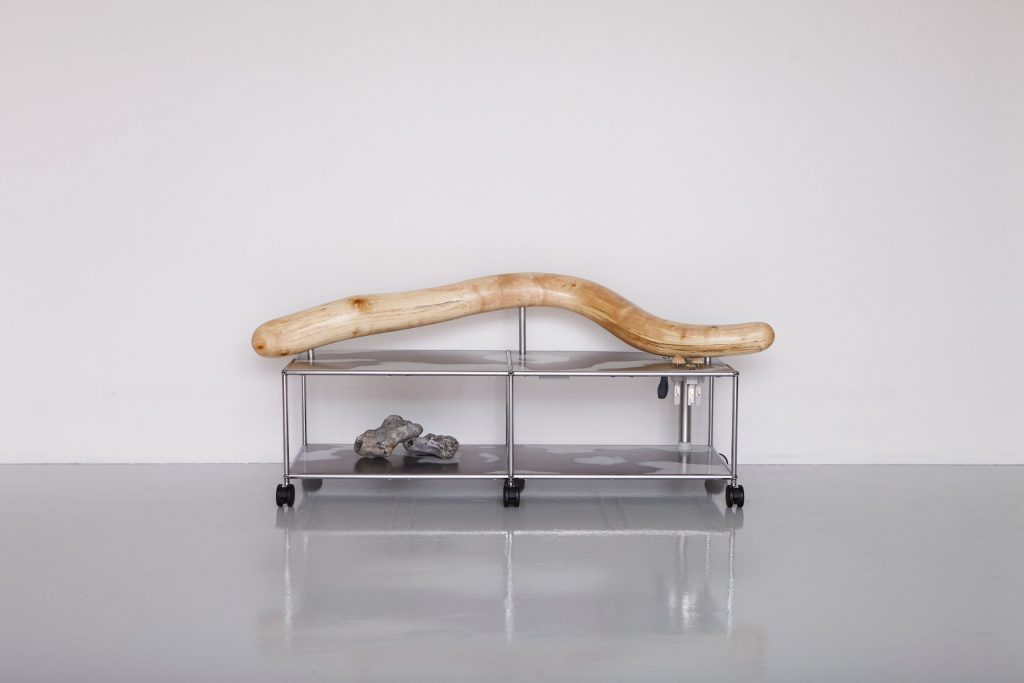
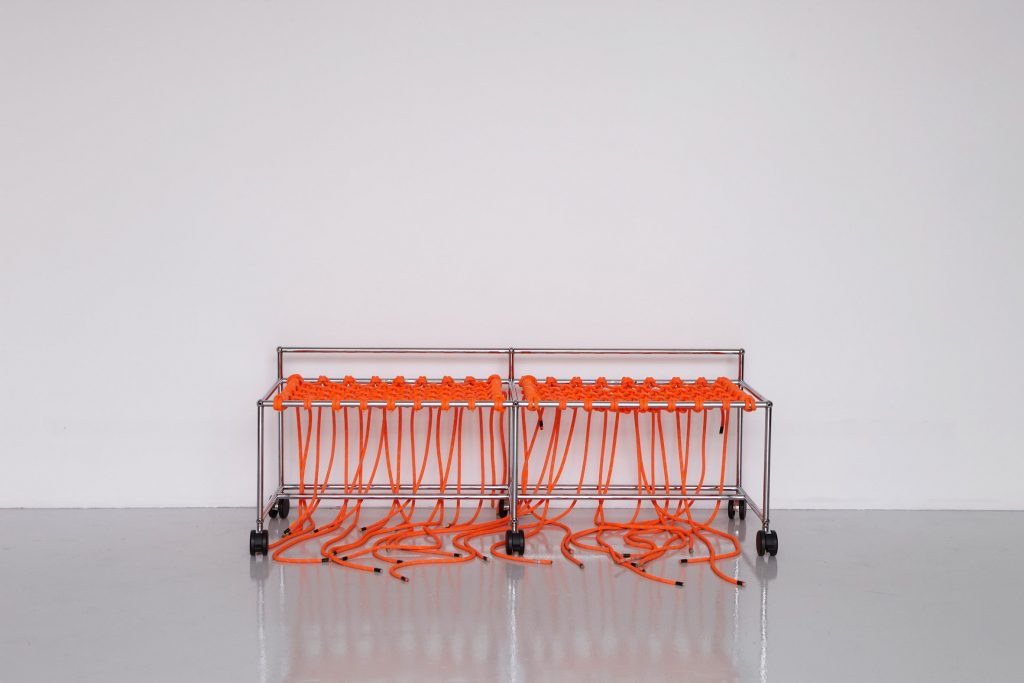
Exhibits from USM Haller Re-Framed
A surreal twist came courtesy of Stian Korntved Ruud, whose interactive bench invited users to inflate a balloon using a built-in bicycle pump. Birch logs, accordion flutes, and seashell buttons added a fairytale-meets-function feel. Meanwhile, Hunting & Narud paid homage to rural Norwegian architecture with a bench clad in salvaged barn wood—one side raw and weathered, the other painted barn-red in a nod to traditional Norwegian façades.
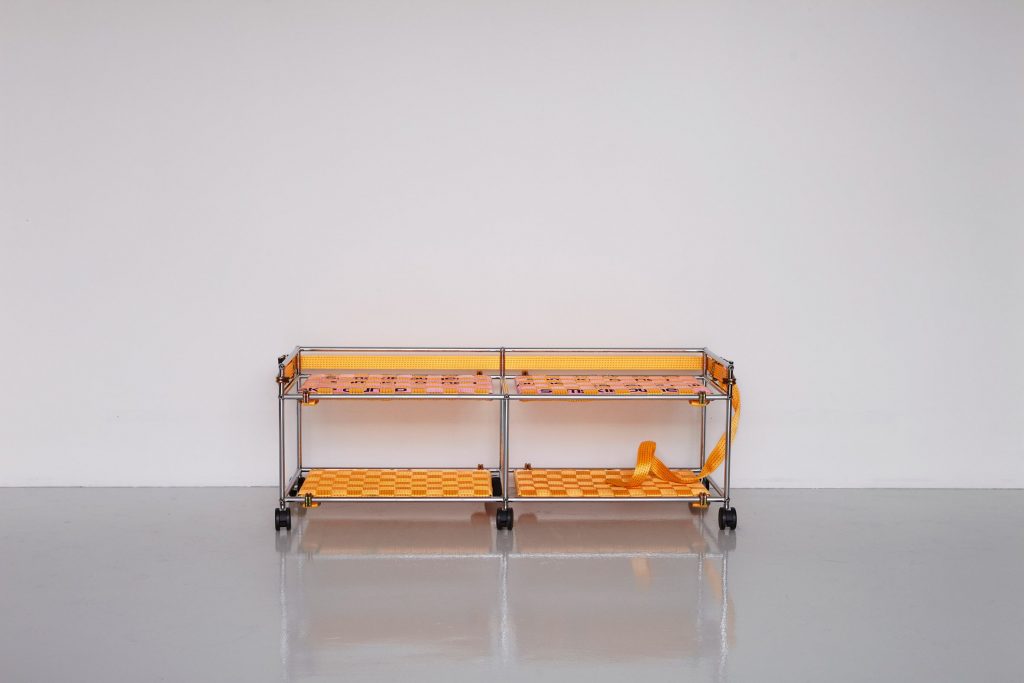
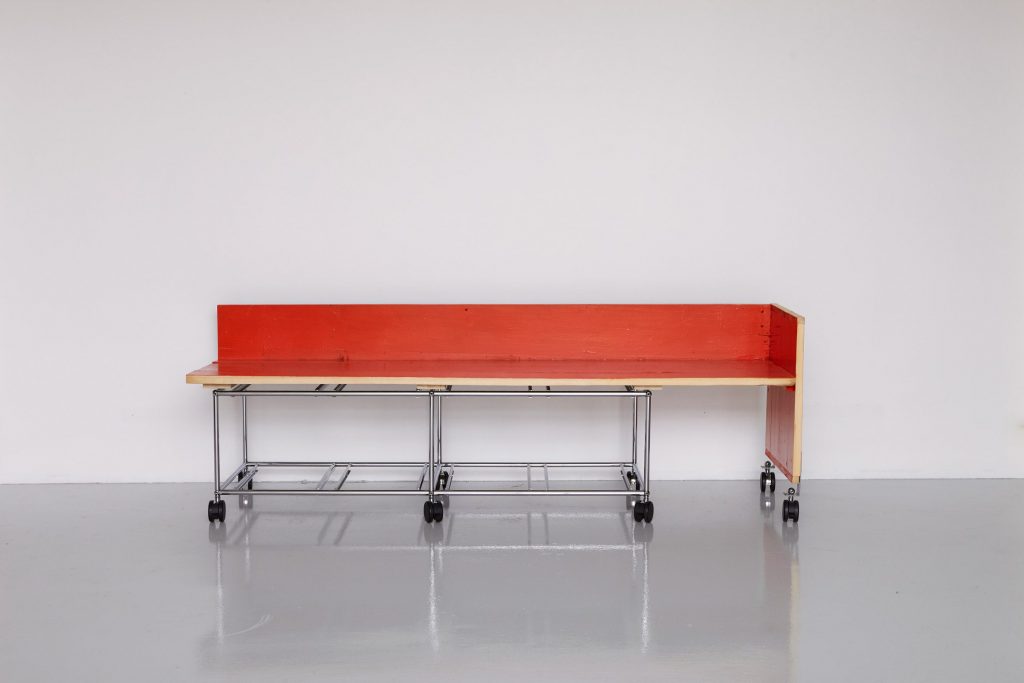
Exhibits from USM Haller Re-Framed
Elsewhere in the collection, designers scavenged for material with an almost archaeological fervor. Josefine Johansson wove a bold, graphic seat using discarded cargo straps; Marianne Skarbøvik repurposed a neighbor’s awning and keychain wire; and Bård Arnesen wrapped USM frames with heritage woven blankets—without cutting or stapling—to preserve their future utility. Andersen himself contributed two designs: one woven with climbing ropes in macramé fashion, the other tiled with surplus acrylic from Fired Earth. These eleven reinterpretations didn’t just demonstrate creative flair; they also served as audience seating during the festival’s talks, reinforcing the idea that furniture—no matter its past—can always find a new purpose.